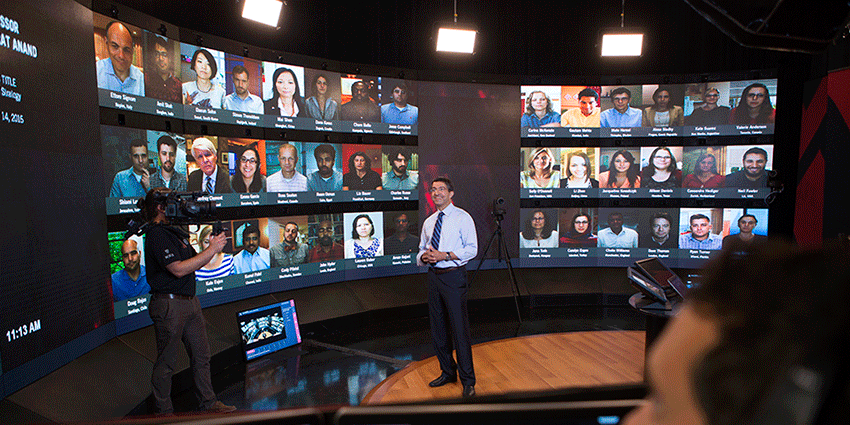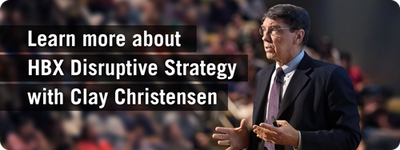
HBX Live is our new virtual classroom and one-of-a-kind digital environment that collapses geography and allows participants worldwide to interact in real-time with one another and a faculty member.
We recently held an HBX Live session for some members of our July cohort of HBX CORe and two students, Chris and Saurabh, volunteered to discuss their experiences on the platform.
Chris is a United States Marine stationed at Camp Pendleton in California who is transitioning to business school next fall. In his spare time, he volunteers for The Wingman Foundation. Saurabh is an Operations Business Analyst who enrolled in CORe to perfect the analytical skills and strategies that will allow him to both advance to a senior position and to obtain an MBA.
What was it like logging into HBX Live for the first time?
Chris: When I first logged in, I didn't know what to expect. When I saw everyone's face on the wall, I was shocked. Quickly I realized that HBX has created the best virtual classroom I have seen. The wall reminded me of students sitting in an auditorium listening intently to the professor. I felt like I was in class. The ability of the instructor to look at you, call on you, and hear your response made me nervous, but also made me engage in the virtual classroom much more than I otherwise would. I expected much less and was blown away by the innovative setup.
Saurabh: It was amazing! I was excited to be a part of such a great initiative. The entire experience was immersive, and seeing myself on the wall with others and faculty members was pretty impressive. I guess the only time I have been a part of anything remotely close to this was in a video conference, but HBX Live was at a different level.
How did Live compare to a real classroom?
Chris: Live was the closest thing to a real classroom environment without actually going to class. In fact, one could argue that Live improves on the classroom experience because you can learn from the comfort of anywhere in the world. Since students can login anywhere around the world, the diversity of the students is a big advantage to foster collaborative thinking.
Saurabh: The Live experience was very engaging compared to a real classroom. Discussions and participation were just amazing. The only part that was distracting me was the chat. I too participated in chat but was more interested in what was happening in front of me than following chat. I did participate whenever I was given a chance. No complaints there at all!
What was your favorite part of the experience?
Chris: My favorite part of the experience was meeting [Ace Ticket founder] Jim Holzman and asking him questions about his business experience. In true case study form, each student had the opportunity to learn from Jim by engaging with him on business decisions. I have sat in a case study class offered at a business school, and Live captured the exact same environment. The students were able to ask Jim any question.
Saurabh: I could name many, but the most favorite part was when I could see the faculty member as well as Jim Holzman from Ace Ticket live on stage sharing their experiences. Seeing and listening to the business owner about whom we studied so much was definitely worth an applaud. He not only shared his experiences but took constructive feedback from many of the HBX participants and responded genuinely.
Do you have any other insights or advice for people?
Chris: I would suggest signing up for Live and HBX CORe. The course has been amazing because I am learning the same concepts and am able to discuss the concepts with students who are taking similar courses at other prominent business schools. I have discussed HBX during my job search, and every employer has been very impressed with my knowledge of business analytics and financial accounting. As Live grows and becomes a larger part of the HBX CORe, the course will only get better.
Saurabh: You need to be there to experience it!Would you want to participate in another Live session?
Chris: Yes!
Saurabh: ABSOLUTELY!
To learn more about HBX CORe or Live, visit hbx.hbs.edu!

























